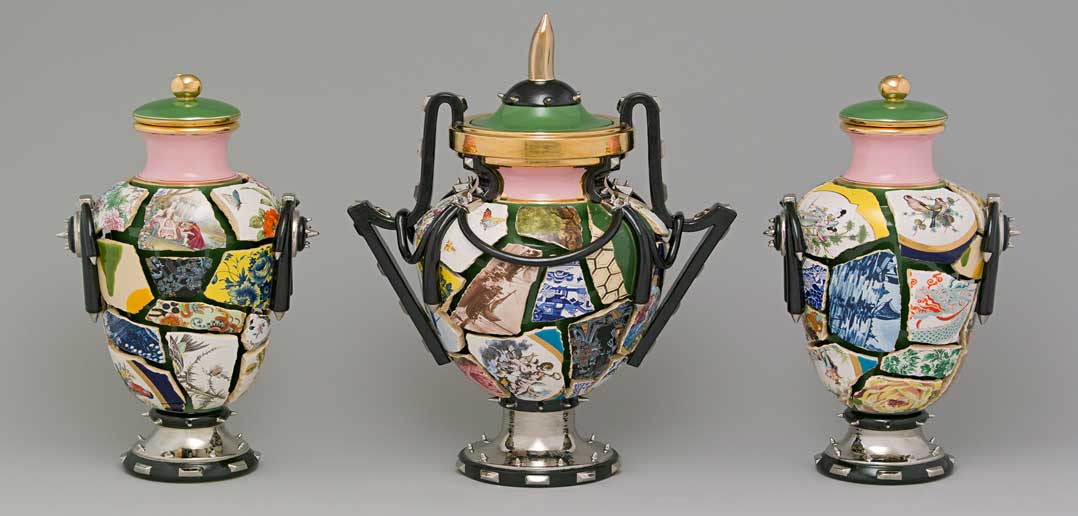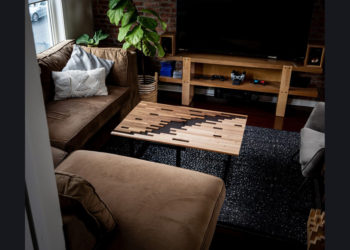The concept of camp includes elements of excess, humour, performance and subversion that seek to challenge cultural norms. The aesthetics are similar to those of the Baroque period; camp is characterized by dramatic details, bold ornamentation and extravagance. European aristocratic expressions, as represented in ruling class males and symbolic of masculine power, are the same aesthetics that could today be seen as queer.
Camp Fires: The Queer Baroque of Leopold L. Foulem, Paul Mathieu and Richard Milette explores the concept of camp as an important vessel for cultural appropriation. It plays with ideas of exaggerated cultural forms and renditions of gendered behavior. In this exhibit at Toronto’s Gardiner Museum, we see the work of three of Canada’s important contemporary francophone ceramic artists displayed together and bound by personal and professional history.
The exhibit was curated by writer, critic and activist Robin Metcalfe, who has worked with Foulem in the past, and who initiated the idea of doing a show that would focus on all three artists. His work has a particular interest in queer identities, and issues of gender and the body.
“Gay men like myself and the artists grew up in a world where there weren’t a lot of representations of homosexuality … of gay possibility,” Metcalfe explains. “So we learned to construct new meanings by bringing together disparate elements of the world around us.”
Foulem, Mathieu and Milette all embrace elements of art history, their own Catholic upbringings and contemporary artistic practices in various aspects of their work.
“I’m part of a small group of Canadian craft-art curators,” says Metcalfe. “These artists consider themselves contemporary artists but are strongly associated with ceramics, so it required a connection with these two concepts.”
Metcalfe also explains the concept of queer as something that can apply to anyone, and therefore can be seen as a universal identifier.
“It’s that outsiderness, the not fitting into prevailing conventions,” he says. “To embrace your own peculiarity and the fact that nobody is normal. It’s the extent that people are willing to embrace the identity of queer – re-appropriating things from modern culture to create meaning.”
Mathieu and Milette both use urns in the vein of Greek mythology to reference modern pop culture; it’s evident in Mathieu’s “Cute Boy Series” (2005) and Milette’s “Hydria 13-3462 with Gold Marilyn Monroe” (1988). Foulem, in turn, depicts dominant male figures within Catholicism and re-appropriates movements and gestures. “I Love My Daddy” (1994-1997) effectively ties celebrity and religious iconology with high art.
“I’m so pleased with the way the work appears within the space,” says Metcalfe. “[The artists] have a long history of being in conversation with one another. So it’s very rewarding to be able to see them all in one room, to see work from the course of their careers all answering similar questions.”
Summer Camp on the Plaza (Camp Fires Party) is taking place on Friday June 27, 2014, 6 – 10 p.m. This exhibition is presented by the Gardiner Museum in partnership with World Pride. It runs until Sept. 1, 2014







